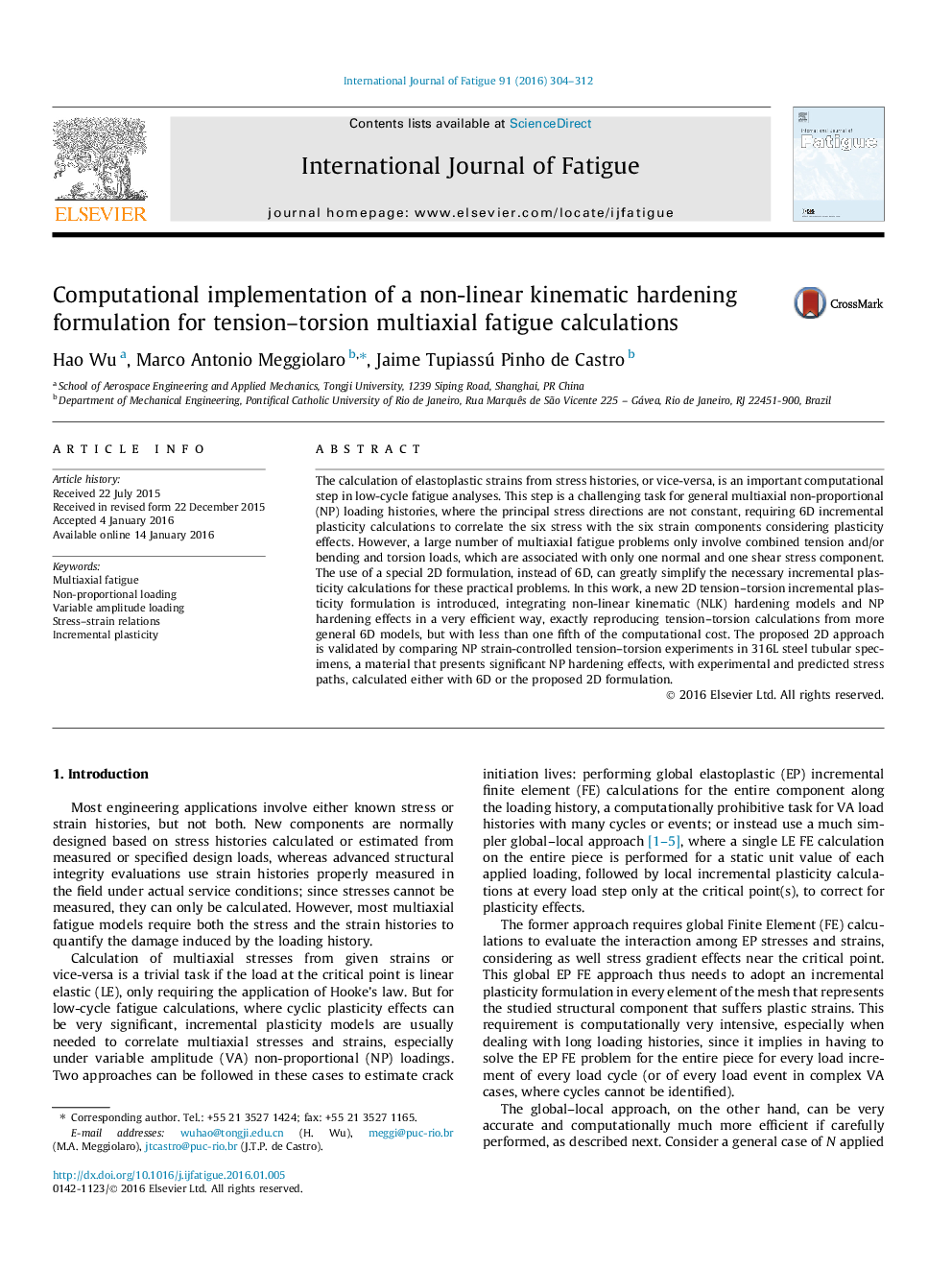| کد مقاله | کد نشریه | سال انتشار | مقاله انگلیسی | نسخه تمام متن |
|---|---|---|---|---|
| 780579 | 1463737 | 2016 | 9 صفحه PDF | دانلود رایگان |
• A 2D tension–torsion incremental plasticity formulation is introduced.
• Integrates non-linear kinematic, isotropic, and non-proportional hardening effects.
• Reduction of the computational cost and time by a factor of at least 5.
• Automatically satisfies the plastic strain incompressibility condition.
• Validated from tension–torsion experiments on 316L steel tubular specimens.
The calculation of elastoplastic strains from stress histories, or vice-versa, is an important computational step in low-cycle fatigue analyses. This step is a challenging task for general multiaxial non-proportional (NP) loading histories, where the principal stress directions are not constant, requiring 6D incremental plasticity calculations to correlate the six stress with the six strain components considering plasticity effects. However, a large number of multiaxial fatigue problems only involve combined tension and/or bending and torsion loads, which are associated with only one normal and one shear stress component. The use of a special 2D formulation, instead of 6D, can greatly simplify the necessary incremental plasticity calculations for these practical problems. In this work, a new 2D tension–torsion incremental plasticity formulation is introduced, integrating non-linear kinematic (NLK) hardening models and NP hardening effects in a very efficient way, exactly reproducing tension–torsion calculations from more general 6D models, but with less than one fifth of the computational cost. The proposed 2D approach is validated by comparing NP strain-controlled tension–torsion experiments in 316L steel tubular specimens, a material that presents significant NP hardening effects, with experimental and predicted stress paths, calculated either with 6D or the proposed 2D formulation.
Journal: International Journal of Fatigue - Volume 91, Part 2, October 2016, Pages 304–312
